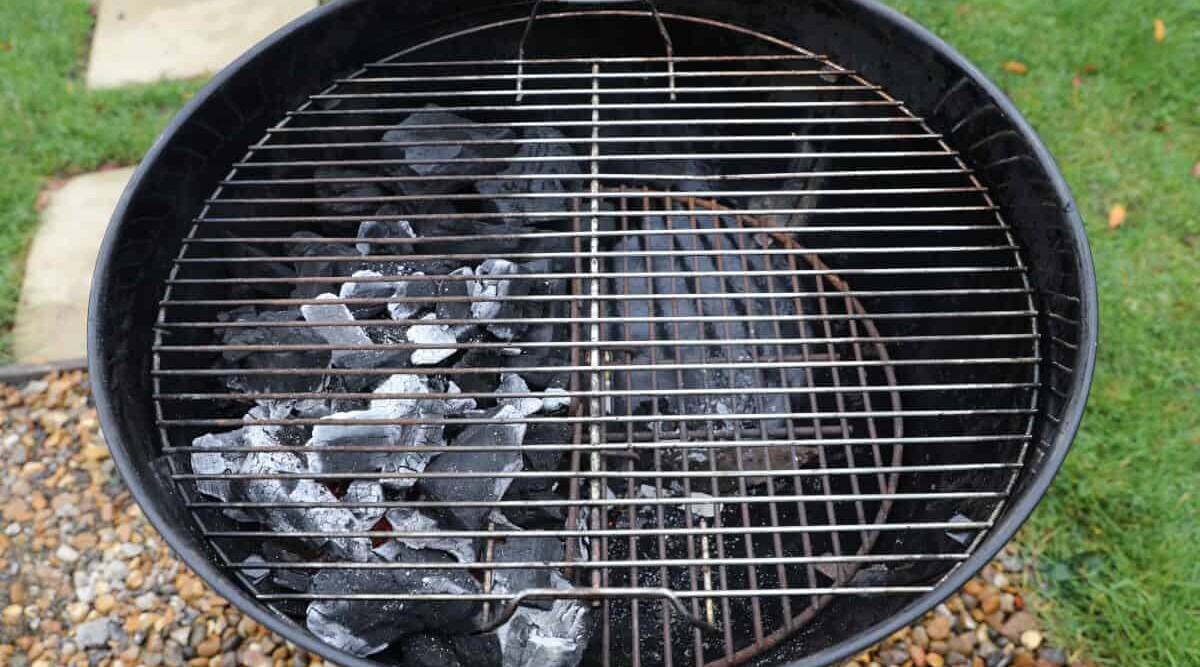
Here’s a riddle for all you grill enthusiasts: What’s worse than overcooked food? Yeah, easy, right? Undercooked food. The two biggest bloopers of the barbecue.
We’ve all been there. Sawing angrily through a steak-turned-hockey-puck, or rushing a piece back to the grill to finish cooking while the diners wait, forks at the ready.
Enter: 2-zone grilling.
This is your hands-down, no-fail best way of grilling. One of the best grilling tips we most highly recommend people to learn. In fact, we’re confident that after reading this post, you’ll rarely set up for grilling any other way.
In this post, we’ll explain what 2-zone grilling is, the benefits of 2-zone grilling and how to set up your grill for this method.
Two Zone Grilling Key Takeaways
- 2-zone grilling — One half of your grill has flames, the other does not.
- Charcoal grill — Bank all coals to one side, so there’s a lower heat ‘safe zone.’
- Gas grill — Leave one or two burners off for an indirect heat, cooler zone.
- Slow roast — Cook larger foods slower in the cooler zone. Put the lid on for roasting with no fear of burning.
- Enjoy — Far more control, cooking a larger variety of foods, with less panicked cooking, and less burned and ruined food!
So What is Two-Zone Grilling?
Like the wheel, 2-zone grilling is a super-simple idea that is highly effective.
Whether you have a charcoal grill, gas or even electric, you simply divide the grilling surface into two zones and apply different heat to each, high heat on one side and low on the other.
This is achieved by having one area of your grill grates sitting directly over the heat source, and setting up a second area of your grill where there is no direct heat under your grates and the food that’s cooking.
This allows foods on the high heat side (direct) to cook fast and sear nicely while other foods cook low and slow over low heat (indirect). 2-zone grilling gives you options and control.
Check out this video for a really simple guide to how to grill using 2 zones.
The Difference Between Direct Heat and Indirect Heat
Direct
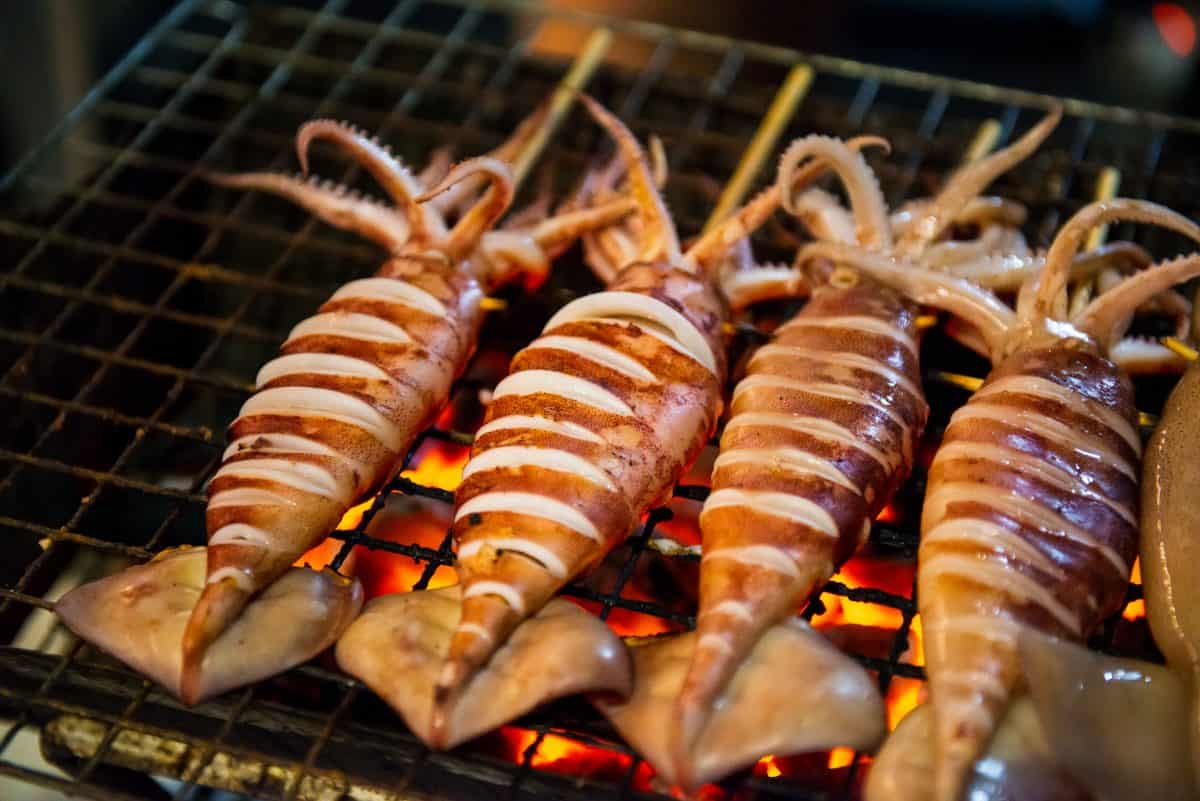
Grilling with direct radiant heat is the way most folks grill before they read this post!
Direct heat is all burners, (or an even layer of charcoal) high heat, flame-broiled! Direct literally means ‘right over the heat source’ and the food is cooked with radiant heat by being placed over the burners or coal.
Nothing wrong with this if you have a handful of chicken pieces, a few steaks or kebabs to cook. A couple flips halfway through cooking. Quick and easy.
Indirect
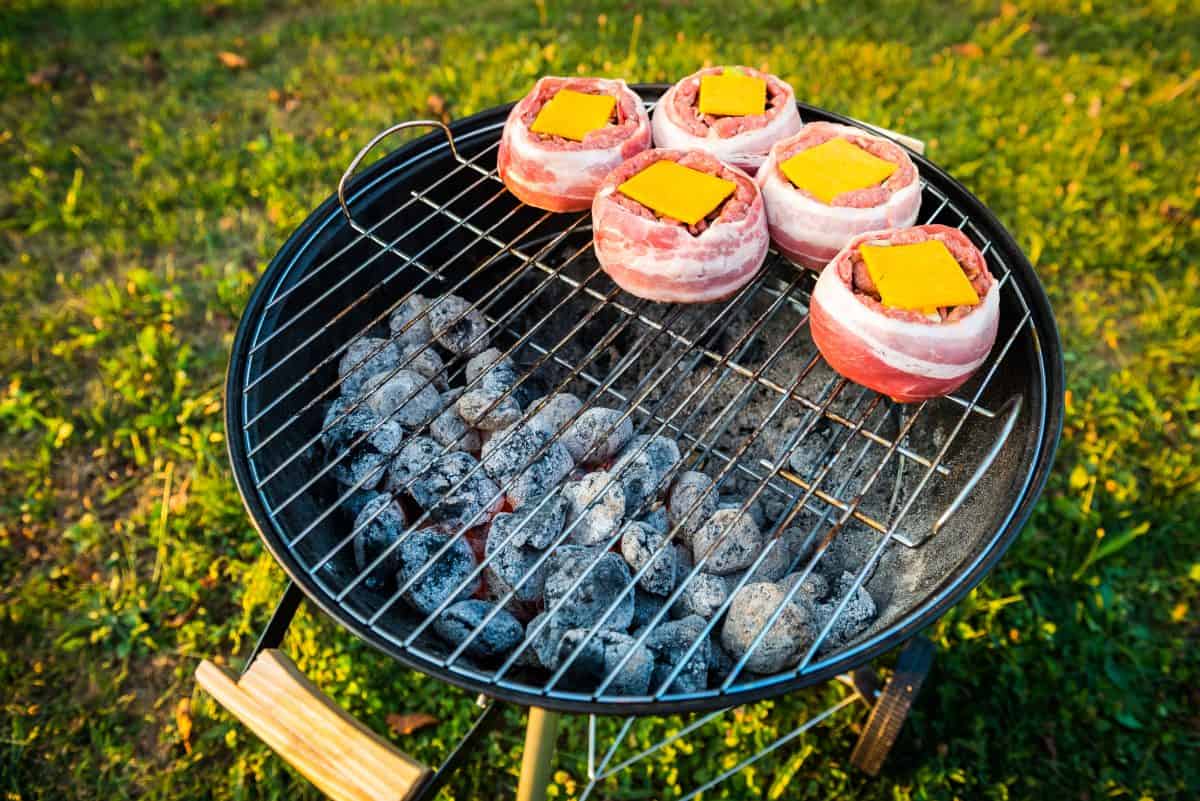
This method, similar to the convection heat in a traditional oven, is what you want for larger, tougher pieces of meat or whole birds.
Indirect heat is where the food is on the grill, but there is no fuel or flames directly underneath the food. There is no direct radiant heat, it is all by convection.
Using indirect heat, you will successfully end up with all that wonderful barbecue flavor while still cooking the food through to tender juicy perfection, but without fear of the direct radiant heat burning your food before it’s had a chance to cook through properly.
For more on the differences between direct and indirect cooking, click here.
The Three Beefy Benefits of Two-Zone Grilling
Flexibility
Have you ever had a bunch of guests who all wanted their burger or steak cooked the same way? Me neither. With 2-zone grilling, you keep everyone happy.
Simply move Jimmy’s medium rare burger from the direct zone to the cooler indirect zone when it’s done to keep warm, while Aunt Flo’s burger cooks through to well-done over direct just as she likes it.
This method also allows you to simultaneously cook large slow-cooking pieces alongside small quick-cook veggies and small pieces of meat.
Let’s say you are cooking a beautiful big prime rib and asparagus and potato wedges all on the same grill. Yes, it’s possible!
You prepare your grill with a high direct heat one side and low indirect heat the other, put your prime rib on the indirect side, close the lid and let it cook to desired doneness (don’t forget thermometer!).
Ten minutes or so before the rib is done, you toss your veggies on the direct heat side of the grill for a quick cook. Everything is ready at the same time. You are the hero of the grill.

I never, and not for years now, ever set up a charcoal grill for high heat grilling without an indirect cooler temperature zone. Once you learn how flexible two-zone cooking is, and how it gives you more control, you will be the same!
— Mark Jenner
Control
You wield the tools, you serve up the grub, you need to tame the flame too.
Creating 2 zones with different cooking temperatures on your grill will allow you to move larger pieces from direct heat when you are happy with the color, sear or crust of your piece, to the indirect zone to finish the cooking gently, and without overcooking.
Or the other way around! A slow-roasting piece needs a little more sear? Flip it over to high heat at the end of cooking time to finish browning and crisping up.
Another benefit of zone grilling is that you will always have a safety zone to remove a piece of meat to if your high heat zone flares up.
And of course, you will always have a place to keep cooked food warm while other pieces finish cooking.
Flavor
In the food world, one size does not fit all. Different foods have different water content, proteins, sugars and more. They all react differently with high and low heat.
To get the very best flavor from your food, mastering your grill’s heat and working the different temperatures is key. When you optimize the heat for a particular food, you’re going to maximize the flavor. In a nutshell…grill smart!
Click here for more nitty-gritty on the science of food and heat. It’s fascinating stuff!
Can I Still Get a Good Crust with Indirect Heat?
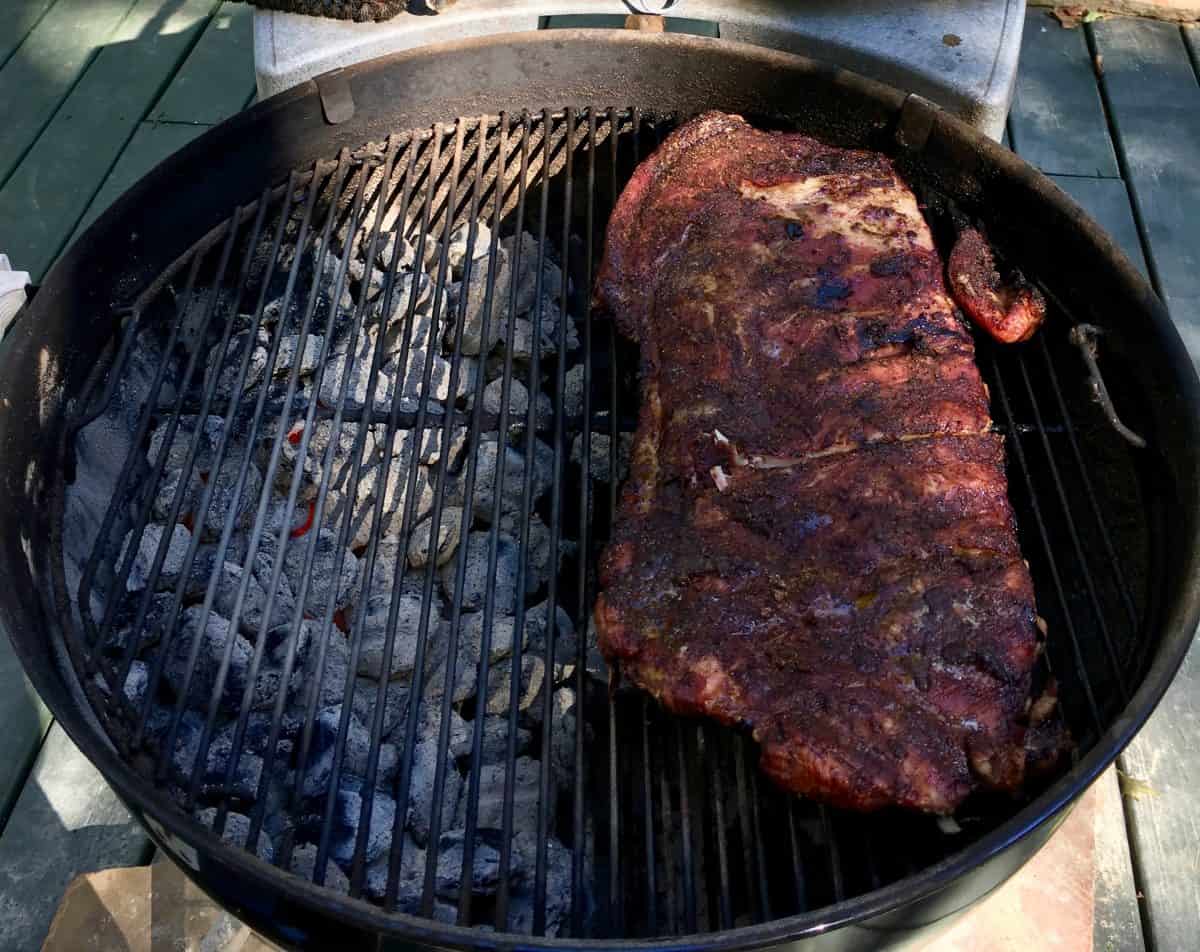
Crispy, golden chicken skin. Dark, crunchy, caramelized pork rind. Sizzling charred ribs.
This is why we grill!
It took me a while to really trust that long slow cooking over indirect heat could produce these finger-lickin’ results, but trust me, it will.
And the nice thing is, you can pretty much fix it and forget it! Slow indirect cooking will cook the entire surface of your food, through to the center, all without the need of turning.
However, the beauty of 2-zone grilling is that you always have that high heat option on the other side of the grill if you need it. Not browned enough for you? Simply transfer the piece to the direct zone for a couple of minutes at the end of cooking and turn one or two times. Watch carefully. You don’t want to burn it or overcook it at this point!
Of course, with both heat options going, you can also start a large joint on high heat, then shift it to indirect heat after a couple of minutes for the low, slow cook. Either way works fine for getting that sweet seared crust.
How to Set Up Your Grill for Two-Zone Grilling
2-Zone grilling can be successfully and easily achieved on any grill. Here is a simple step-by-step guide for all grills, gas, charcoal and electric.
Gas or Electric Grill
- Turn half your burners (or elements on an electric grill) on high — direct heat — and half on low — indirect heat.
- If you have 3 burners, make the decision (1 high, 2 low, or 2 high, 1 low) based on what you are cooking and how much high direct heat you need.
- Aim for 225 °F on the low heat side of your grill and 500° on the high heat
- Toss on the grub. Large items go first. A quick sear on the high side then switch to low heat.
- Small, thin, quick-cooking items get a quick grill on high heat then switch to low heat so that they don’t overcook and toughen (meat) or go to mush (veggies).
- Use the low heat side to finish cooking big pieces slowly and to keep all foods warm before serving.
Charcoal Grill
- Get your coals good and white-hot using a charcoal chimney starter.
- Now, instead of spreading them evenly over the lower grate, bank all the coals to one side of the grill. This will create your high direct heat zone.
- The side with no coals is your indirect low heat zone.
- Follow steps 3-6 from gas grills above.
Important: when using indirect heat, always keep the lid closed to maintain the lower temperature under the hood.
Tip: place a heavy-duty foil pan under any large meat you are grilling using indirect heat to catch the drippings (gravy, mmm-hmm) and prevent fat flare-ups. See below for more tips using water pans, and check out our epic guide for more tips in general on using a charcoal grill.
Which Foods Should I Cook Direct? And Which Indirect?
Which foods? Which heat? Check out this simple at-a-glance chart.
| Food | Direct Heat | Indirect Heat | Tips |
|---|---|---|---|
| Burgers, fish, chicken pieces, thin steaks, pork chops, veggies | yes | Briefly, just to keep warm | Switch pieces to indirect side as they become done. Especially useful with burgers and steaks where people have different preferences on doneness. |
| Roasts, whole chickens & turkeys, racks of ribs, brisket, pork shoulders | Briefly, just to sear | Yes | Searing direct can be done before or after the long slow roast over indirect heat |
| Meats with sugar-based glazes and marinades | Very briefly | Yes | Keep these on very low heat as sugar burns easily |
| Meat with bones | Briefly | Yes | Anything with bones takes longer to cook. Keep these pieces on indirect for longer |
The rule of thumb is size. Quite simply, try to cook a big joint or meat or a whole chicken on direct heat, and you will end up with an ugly lump of charcoal.
Larger tougher pieces require low slow cooking. But, you still want that beautifully browned Maillard crust, right?
So start cooking your big piece on the direct side, just for a few minutes, til the color and sear is to your satisfaction, then move the piece over to the indirect heat to finish cooking.
Pieces with bones (chicken thighs, thick bone-in pork chops) will also need indirect heat after the searing high heat to ensure if they are cooked through.
Smaller thinner pieces on the other hand, need quick intense high heat cooking so that the texture of the food is preserved (not made tough), the veggies retain their beautiful colors and al dente crispness, and the surface of meat achieves that gorgeous brown sear that we all love.
Fiddling, Noodling & Temperature Control
Follow the simple steps in this post, and you are well on your way to the happy land of perfect steaks and crispy chicken.
But every grill is different, and you may need to experiment a little with how many burners off and on, or how much of your firebox (bottom of your grill) you cover with charcoal in order to achieve the right balance of high and low heat.
You’re shooting for 225 °F on the indirect side of your grill, and 500-600 °F on your direct heat side.
Here is a simple way to gauge the temperature of your grill.
Remember too, that outdoor grilling is less of a perfect science than your kitchen oven cooking…you’ve got sun, wind, rain, snow, all kinds of funky stuff that will mess with your cooking temperatures.
This is why it’s essential that you always use a thermometer. Experts agree that the only way to control the safe temperatures of cooked and grilled food is by using a thermometer.
Smoking and Using Water Pans in Your Grill
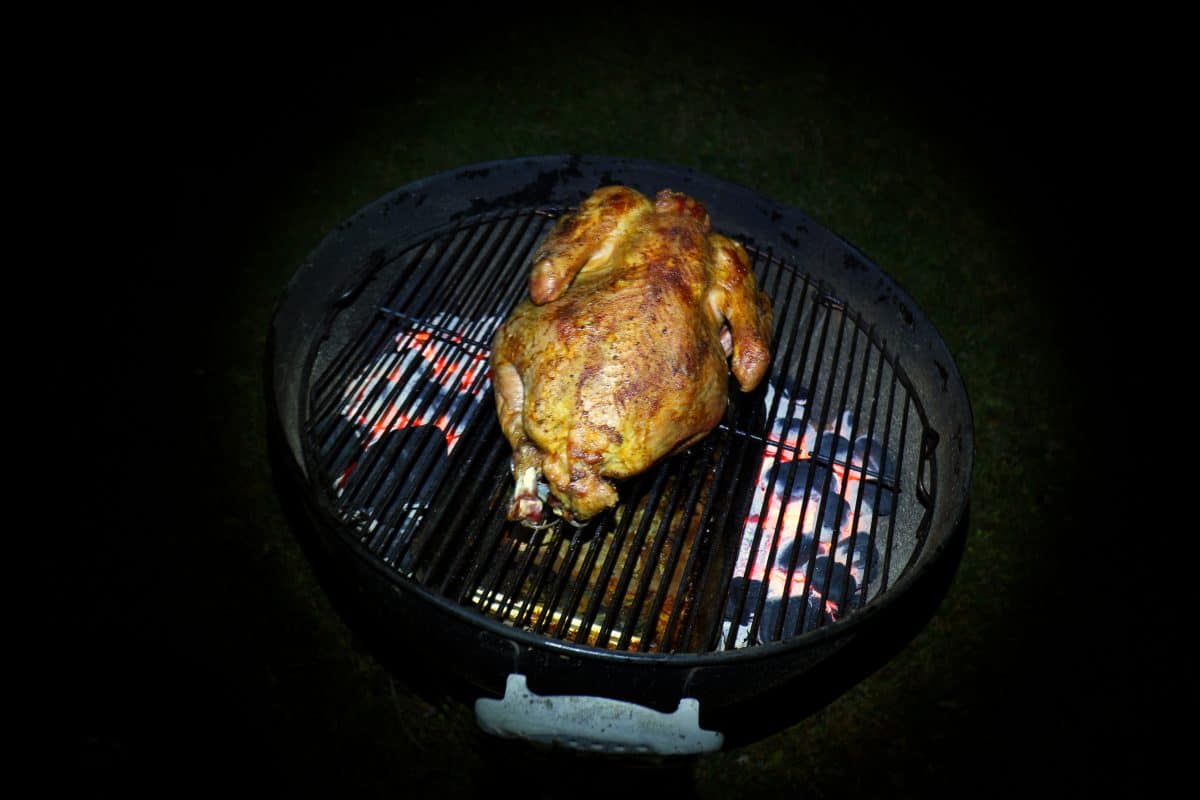
BBQ guru, Steve Raichlen tells us to “Smoke everything!” And let’s face it, nothing beats tossing a handful of hickory or mesquite wood chips right into the grill to pump up that to-die-for smoky flavor.
But when you slow roast large joints of meat or whole birds, especially using smoke, you risk drying out the meat. This is where a water pan can help.
A water pan adds humidity to the cooking atmosphere, and keeps the meat moist and juicy, as well as absorbing heat to help keep the temperature down.
Using a water pan — as well as wood chips -— is especially good because the moisture binds with the delicious smoky gases and helps to infuse the meat.
Here’s How:
With charcoal grills where you have set up your 2 grilling zones, simply put a water pan at the bottom of the grill on the empty side (no coals). A second water pan above the coals on the direct heat side will further protect the meat from the high heat.
Add a handful of wood chips to your hot coals. Mouth-watering bacony smells!
On a gas grill, set up your meat on a rack above a water pan (to catch those lush drippings for a pan sauce!). Tuck a small foil container or perforated foil pouch filled with wood chips beside the burners under the grate.
Turn some burners on low and some on high as explained earlier. Close the lid and let the magic happen.
The Last Bite
When you control and master the heat zones on your grill, you’re going to turn out fantastic results….food that is cooked to perfection, dripping with flavor, seared to smoky goodness. The Holy Grail of every grillmaster.
The best thing is, if you have a grill, you’re good to go…no special equipment, nothing to buy, all you need is the solid 2-zone grilling info in this post right here!
Happy grilling, all! And let us know how you get on. Got any good tips to share? We’d love to hear!


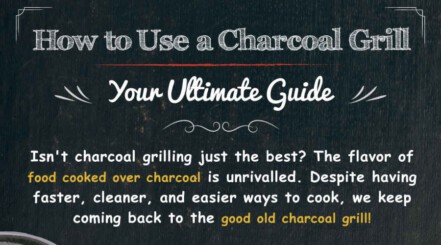

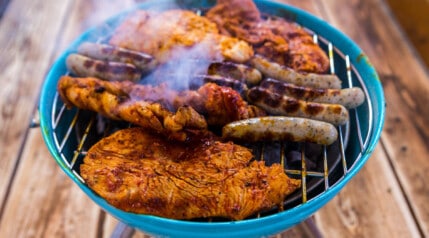

0 Comments